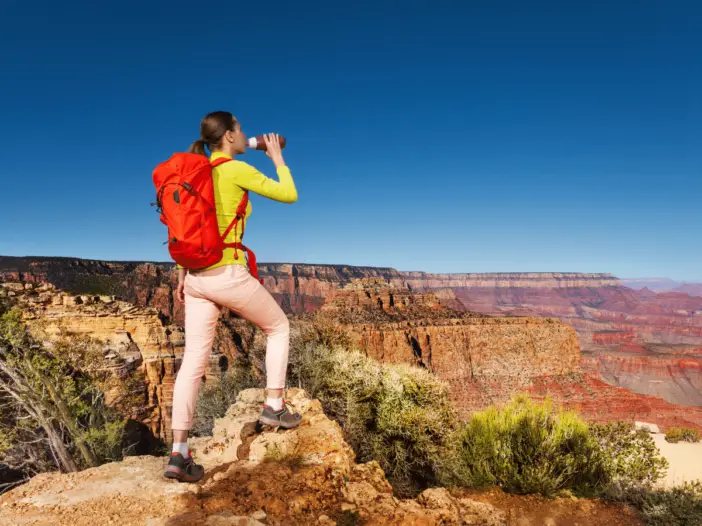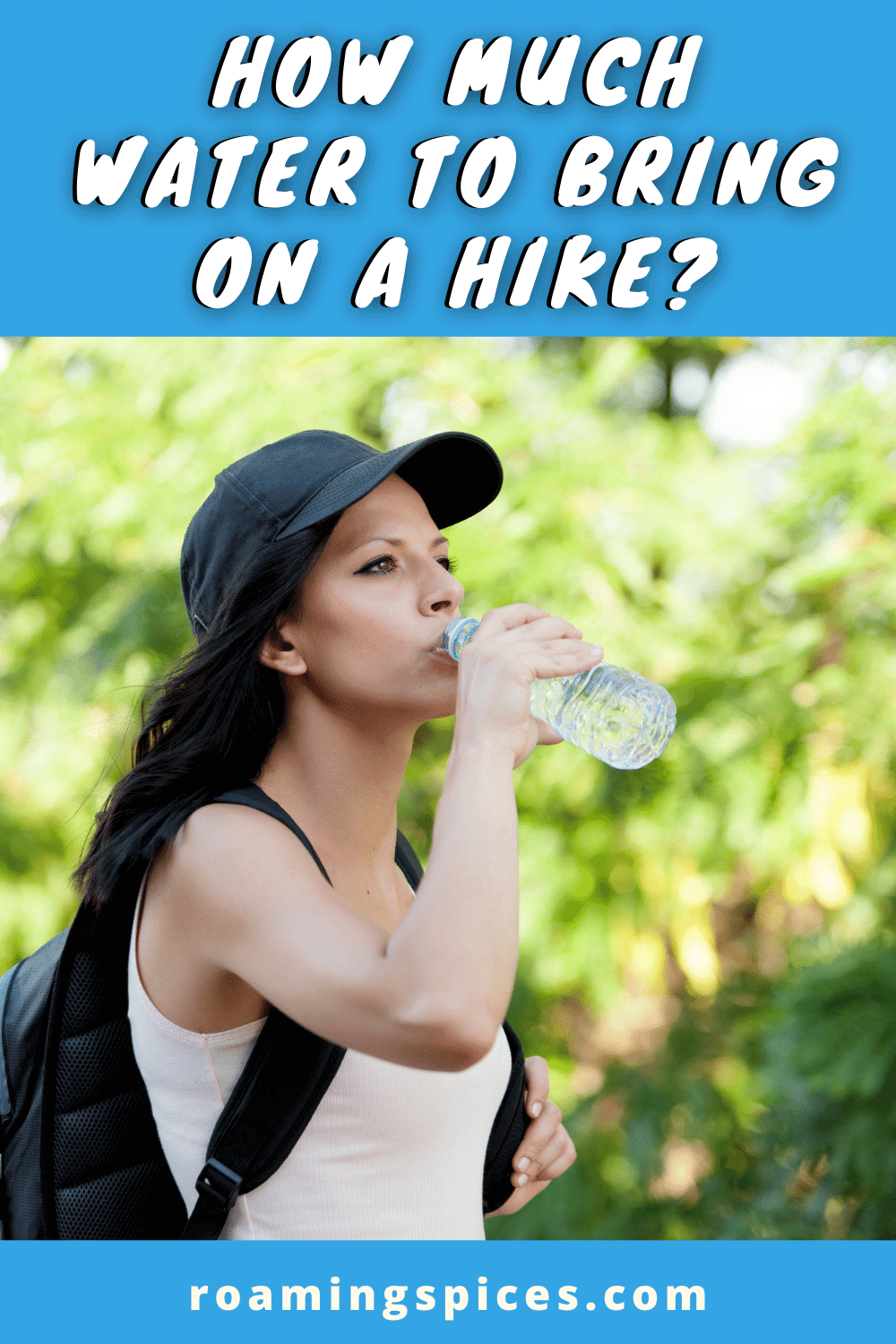
Hiking Basics
Knowing how much water to bring on a hike is crucial for your hiking health. Here we have highlighted a number of important tips to ensure that you have more than enough water on the trail and that dehydration never comes knocking
How Much Water to Take Hiking
One of the questions asked most frequently by people planning a hiking trip is how much water to bring on a hike. Since a long day hike—let alone a backpacking trip—is pretty serious exercise, your body will need to be kept fueled and hydrated.
Dehydration while hiking is no joke. So, in this post, you’ll find out exactly how much water to take hiking and some practical tips to stay hydrated on the trails.
It can be tricky to figure out exactly how much water you should bring on a hike. On one hand, you don’t want to get dehydrated. But on the other hand, bringing too much water can greatly increase the load you’ll be carrying and slow you down.
The amount of water to take hiking also depends on several different factors. You need to take into account the location of your hike (elevation, terrain and grade), the duration and the weather, as well as your own sweat rate (do you sweat a lot or hardly at all?) and your age and body type.
Generally speaking, for a moderate day hike with a steady pace on average terrain, it is recommended to drink 1/2 litre per hour.
This number does, however, increase for more strenuous hikes, in warmer or drier weather, and at higher altitudes. For more challenging hikes, you should bring about 1 litre per hour of hiking.
Remember that the more you hike and the more experienced you get, you’ll be in a better position to figure out what your body needs. You’ll learn your own hiking pace on various terrains, grades and distances, which will help you plan future hikes and water requirements much better.
How Much Water to Take on an Easy to Moderate Day Hike?
A simple way to determine how much water to bring on an easy to moderate day hike is the following. Divide the distance of your hike by your estimated hiking pace, which is close to 3 mph for most brisk walks on gentle terrain. Divide that number by two. You now have the litres of water you should bring!
How much water? (Litres) = Distance ➗ Hiking Pace (MPH) ➗ 2
A practical example would be this. Let’s say you’re planning a 6-mile hike on gently sloping, not-too-demanding terrain. Your average hiking pace on that kind of trail is 3 mph. That means you’ll be hiking for about 2 hours. Dividing 2 hours by 2 gives you 1 litre of water to bring.
How Much Water to Take on a Strenuous Day Hike?
Again, we can’t repeat this enough, more challenging terrain, weather or other conditions might require you to bring more water. Additionally, we’d recommend estimating a walking pace of 2 mph for a typical strenuous day hike. You’ll know your own ability best though.
For a strenuous day hike or a hike in more challenging and demanding conditions, this is the formula we suggest you use. Could it be any easier?
How much water? (Litres) = Distance ➗ Hiking Pace (MPH)
When using either of the simplified formulas above, we recommend rounding up to the nearest half-litre. For any kind of hike, it’s better to bring a little too much water than not enough.
Tips to Avoid Dehydration While Hiking
Now that you have a general idea of how much water to bring on a hike, let’s talk about some tips to prevent dehydration while hiking. After all, simply bringing enough water on your hike is not sufficient. You have to actually drink it, too.
There’s more to drinking water while hiking than, well, just chugging water while hiking. Here are some tips to maximize your chances of staying properly hydrated on the trail.
- Pre-hydrate – It’s important that your body is properly hydrated before you start hiking. Drink about a litre of fluids about two hours in advance. Make sure to pee before you leave!
- Keep your water readily available – Keep your water bottle accessible in a side mesh pocket of your backpack. A hydration reservoir with a drinking tube is even more convenient.
- Protect yourself against the sun – Wearing a hat, lightweight long sleeves and sunscreen prevent you from getting sunburnt, which causes your body to dehydrate faster.
- Take small sips – Don’t chug huge amounts of water at once. Your body won’t absorb large quantities of water all at once, plus you’ll have to pee more on your hike. Additionally, drinking lots of water in one big gulp can dilute your blood sodium levels, which can fatigue you faster.
- Sip regularly – Take many small sips regularly to keep the amount of water in your body as steady as possible. It’s a good idea to take a sip of water every 15 minutes. This way, your body will also be able to absorb that water more efficiently.
- Remember those electrolytes – When you sweat, you lose both water and electrolytes. You cannot replace both simply by drinking water while hiking. It’s equally as important to top up your sodium, potassium, magnesium and calcium levels. You can do that by adding an electrolyte powder to your water, but also by eating salty snacks and a banana or two.
- Rehydrate – It’s important to keep drinking water after your hike is over. This will bring your body fluid levels back to normal and help the recuperation process.
Signs of Dehydration While Hiking
Dehydration starts much earlier than many hikers realize. Cramps and headaches, for example, are signs of pretty advanced dehydration. Often, simply being thirsty is the first sign that you’re getting dehydrated. Pay attention to what your body is telling you!
Here’s an overview of the most common and obvious signs of dehydration, from minor to severe:
- Dry mouth
- Feeling thirsty
- Lower energy levels
- Muscle cramps
- Headache
- Feeling nauseous
- Tripping, stumbling and difficulty talking
- Dark-coloured urine
How Much Water to Bring on a Hike: Conclusion
In conclusion, figuring out how much water to bring on a hike is not an exact science, but it’s not too difficult either. The rules of thumb are the following:
- At least 1/2 litre per hour of hiking for easy to moderate hikes in normal conditions.
- At least 1 litre per hour of hiking for strenuous hikes and/or challenging conditions.
Like Our Article? Please Pin it!


Leave a Reply